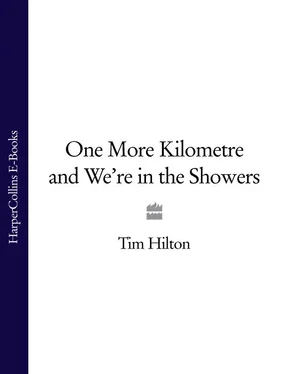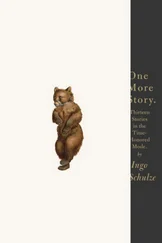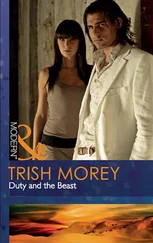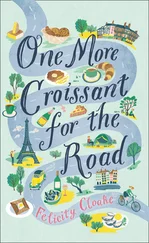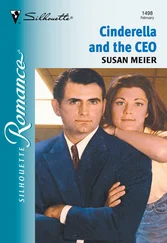Passionate love poetry is rare. Cyclists do of course write about attractive women. The most favoured women are barmaids. Next most popular are the owners of traditional cafes and teashops. In third place, some way behind, are other cyclists. Here is the author of ‘Lines written after a chance encounter with a charming member of the Merseyside Ladies’ Cycling Association’:
A presence brought enchantment to the ride
A presence, riding with me, by my side …
There are also many poems which address a favourite bicycle as though it were a good old wife:
We’ve had some pretty good times together
Awandering up and down the hills and dales …
Other categories of cycling verse include the very important rolling-road poems, with their tales of memorable rides:
At the witching hour one winter’s night, snow thick upon the ground
Some Clarion lads from Manchester left Handforth homeward bound …
And there are many good-cheer poems:
There’s an inn down in Surrey that’s known far and wide
For the welcome extended to all those who ride …
At one time it was also common for clubs to sing as they went along the road together. The club run, especially after it turned for the homeward ride, but before the final ‘blind’, became a wheeled choir. If the run was well attended there had to be a choirmaster in the middle of the bunch to coordinate the tempo and remind clubmates of the words of songs. The effect was probably ragged, but a singing club run must have been an impressive thing, astonishing to a bystander.
Some songs – I write of days long gone by – were from the music hall or were well-known ditties such as
Summer rain brings the roses again
After the clouds roll by …
Less often, clubs sang the classics of choral music. Beethoven’s ‘Ode to Joy’ was a favourite, though no one knew the German words and there has never been a translation into English. Ignorance of the words of songs led cyclists towards mockery. ‘The Soldiers’ Chorus’, for instance, was sung as ‘Beer, boys, and bugger the Band of Hope’, probably as the Sunday club run passed some nonconformist chapel.
Some clubs had their own poet who wrote songs and coached other members. The Catford CC was one of them. This song comes from the Catford:
We’re boys of every sort, in all the branches of the sport,
The road and track boys, the lady-back boys,
Our object is good sportsmanship, our racing is good fun,
Our motto is Good Fellowship, for each and ev’ry one …
A ‘lady-back boy’ is the owner of a tandem who has a girlfriend. This Catford song probably has an early date, since the singing club runs were most popular in the 1920s and 1930s. The last report I have of a club wheeling through the lanes in song (a CTC section: it would be, wouldn’t it?) comes from the mid-1950s. I never myself experienced a singing club run though I know some people, rather older than me, who recall the phenomenon. One of them points out that only cyclists would have joined in such a practice. ‘Other people aren’t crazy enough.’
The songs, recitations and poems began with the first Clarion ‘smokers’ and the birth of club magazines. Some of them relate to a minor development in English literature. In the 1890s there was a vogue for rolling-road poems from the pens of such official writers as Hilaire Belloc, G. K. Chesterton and John Masefield. They made an addition to English nature poetry simply by writing so much about roads. Many of their sentiments were transferred to verses by cyclists. The same official writers often give us descriptions of gypsies. And, sure enough, a preoccupation with the wandering people of the countryside also has a place in the literature of cycling. For what is a cyclist, if he is not a postman who dreams of becoming a gypsy?
The Romany is weather-beaten, misunderstood, ungovernable and free. So he entered the lore of cycling as soon as the sport became truly popular and became an alternative way of life for the low paid. Many of the clubs founded in those days – plenty of them still in existence – have the words ‘nomads’, ‘wanderers’ or ‘vagabonds’ in their names. It had been easy for the young spirits who founded such clubs to make an association with the gypsy. Cyclists went their own way through the lanes or across the heath, as the wind or fancy took them. They carried few possessions, wore bright clothing, were refused entry to the more genteel pubs, tinkered with their mounts at the side of the road, took their meals behind hedges and slept in haystacks.
I am old enough to remember the haystacks and still think it was a good way to spend Saturday night. Today, veteran cyclists bore their sons and teenage clubmates with tales of rough nights when they burrowed into barns and ricks, fearful of the farmer even after the pint or two they had probably drunk. How scratchy the haystacks were, how rural they smelt, how a lad longed for a lass to be with him in his hayhole!
Haystacks were useful to us for quite practical reasons. They provided cost-free lodgings close to the start of time-trial courses. You could spend Saturday night in a haystack and be there and ready to race on Sunday morning. Many time triallists camped before an event, but there was more than a touch of respectability about their Bukta or Blacks-of-Greenock tents, their shaven faces and wifely wives. A racing man from a haystack was a more dangerous sort of cyclist.
Haystack nights disappeared in the 1960s, when people had more money and looked for a different style. The old prestige accorded to haystackers came from their vagabond or wild-man demeanour. Cycling lore contains many stories about strangers who appear in the night or who join the road from a woodland path. A lone cyclist enters a remote country pub. He asks for a pint and an empty smaller glass, then produces half a dozen duck eggs from a brown paper bag. The mysterious wheelman pours a little beer from his pint into the smaller glass, cracks an egg into it and drinks the mixture. He does this five more times. Then he finishes his beer and leaves the hostelry, away on his bike to who knows where.
All stories signify something beyond themselves. What does this story mean? Perhaps the cyclist is really a fox. Are there parallels in the folk legends of, for instance, Belgium, a country of beer, cycling, early dark nights and short distances between country and town?
Another cycling legend – one that does have equivalents in British folklore – concerns the old-timer. In song and story he is not awheel but is encountered at the side of a road. He wears unfashionable clothes, carefully washed and stitched where necessary. He is not the sort of person who takes his rest in a haystack. He might be a ghost. The old-timer’s bike is ancient. Some of its accessories, in this story usually the mudguards, are held to the frame by twisted pieces of wire. But the transmission – chainset, chain and back sprocket, the heart of a bicycle – is expertly and beautifully maintained. The old-timer has climbed off to eat his sandwiches or to smoke a pipe. Other cyclists riding the same road instinctively brake and stop to say a word in fellowship or homage. He replies only with the words ‘It’s a grand life’. Just as no one has seen him ride, nobody knows where he comes from. But some versions of this myth give the old-timer a Black Country accent.
Is it merely coincidence that the photographs of Reg Harris, advertising his Raleigh bicycle, used to put the world champion in this old-timer pose, on a grassy verge by an English hedge, with pipe in hand, smiling in kindly fashion?
One final country legend. Almost as memorable as the old-timer is the icon of the peripatetic poet. He is on his bike in the countryside, sometimes glimpsed by other cyclists, shepherds and thoughtful rural folk. On occasion he is lying on the verge of the road, apparently asleep. What does this mean?
Читать дальше
